“Cherish the moments. They go ever so quickly.” Sheila Hancock, beloved actor, writer – and award-winning singer, notably of Stephen Sondheim in Sweeney Todd – gave us that carpe diem nudge in the course of an afternoon discussion of her favourite music. Beside her, a bunch of playing partners (the Carducci Quartet, pianist Christopher Glynn, soprano Caroline Blair) performed extracts from her choices.
Such events can often err on the side of cosy blandness. But here amid the early-Georgian splendour of Duncombe Park outside Helmsley in North Yorkshire, Dame Sheila – utterly undimmed at 91 – and interviewer Katy Hamilton frankly confronted time and memory, mourning and mortality. Her far-from-cosy selections spanned pieces by Mahler, Dvorak, Chopin, Tchaikovsky, Beethoven, Sondheim himself – and, unforgettably, Shostakovich, with a heartfelt tribute to his genius and courage in a hellish age and a ferocious account of the eighth quartet from the Carduccis. “They take death on, don’t they, the Russians. They look it in the face,” Hancock (pictured below, with Katy Hamilton) said. As did Beethoven, whose fate-embracing finale to the Op.135 quartet we heard. "Muss es sein? Es muss sein." As listeners, meanwhile, she advised us to “Allow yourself to be vulnerable. Open yourself up. Don’t be frightened.”
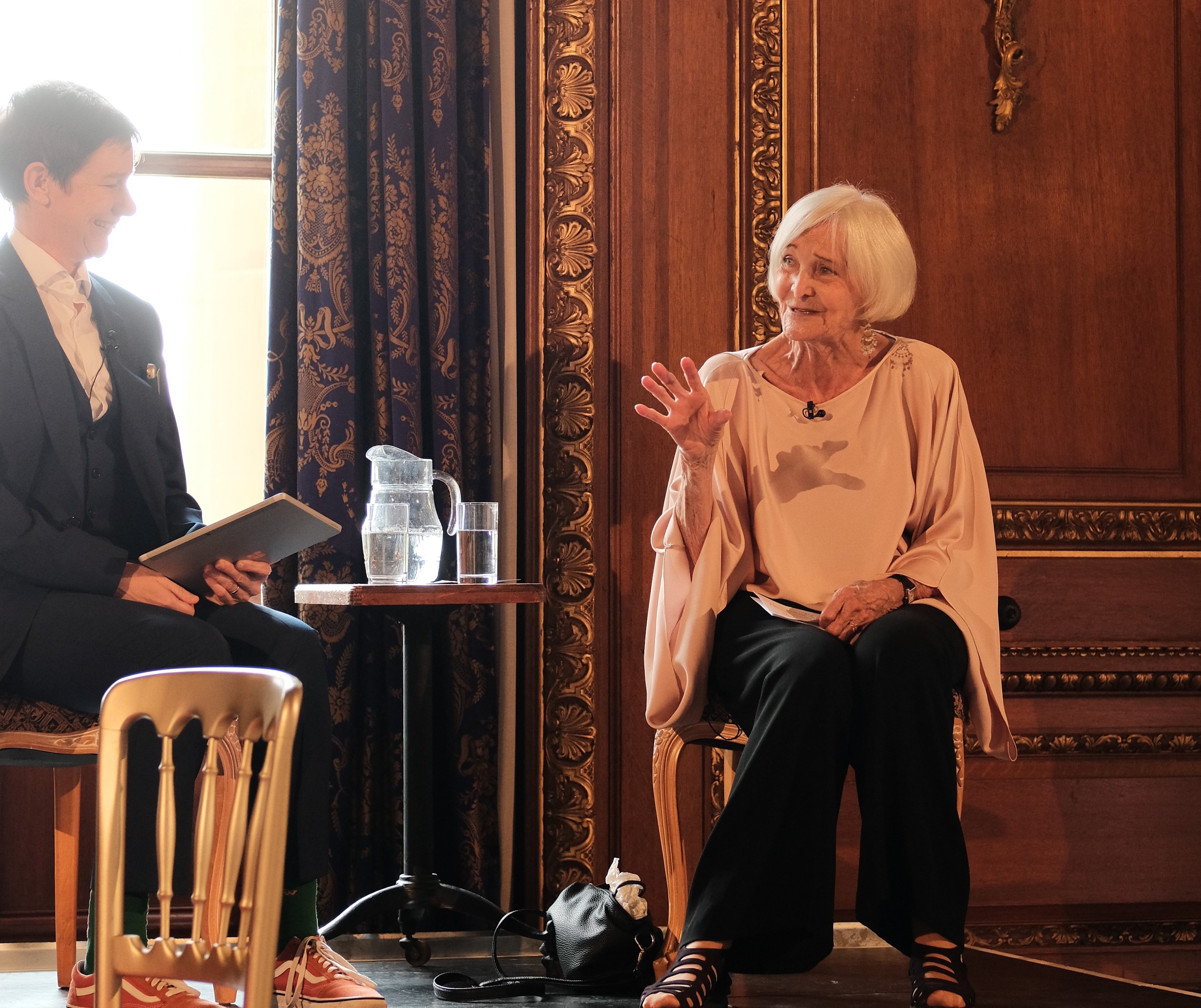
Not so with Ryedale, where Chris Glynn – director since 2010 – has via what he calls “incremental” changes transformed a local summer celebration into an international gathering where genres, formats and traditions mingle. This year 700 artists took part; they managed three world and three UK premieres. My all-too-brief Ryedale stay missed highlights ranging from Angela Hewitt’s opening recital and Spring Snow – Fleur Barron and Julius Drake’s kabuki interpretation of Schubert’s Winterreise, with performers Hibiki Ichikawa and Suleiman Suleiman (pictured below) – to Sheku and Braimah Kanneh-Mason’s boundary-crashing gig (Brahms to Tom Jobim and Bob Marley) with the Fantasia Orchestra. 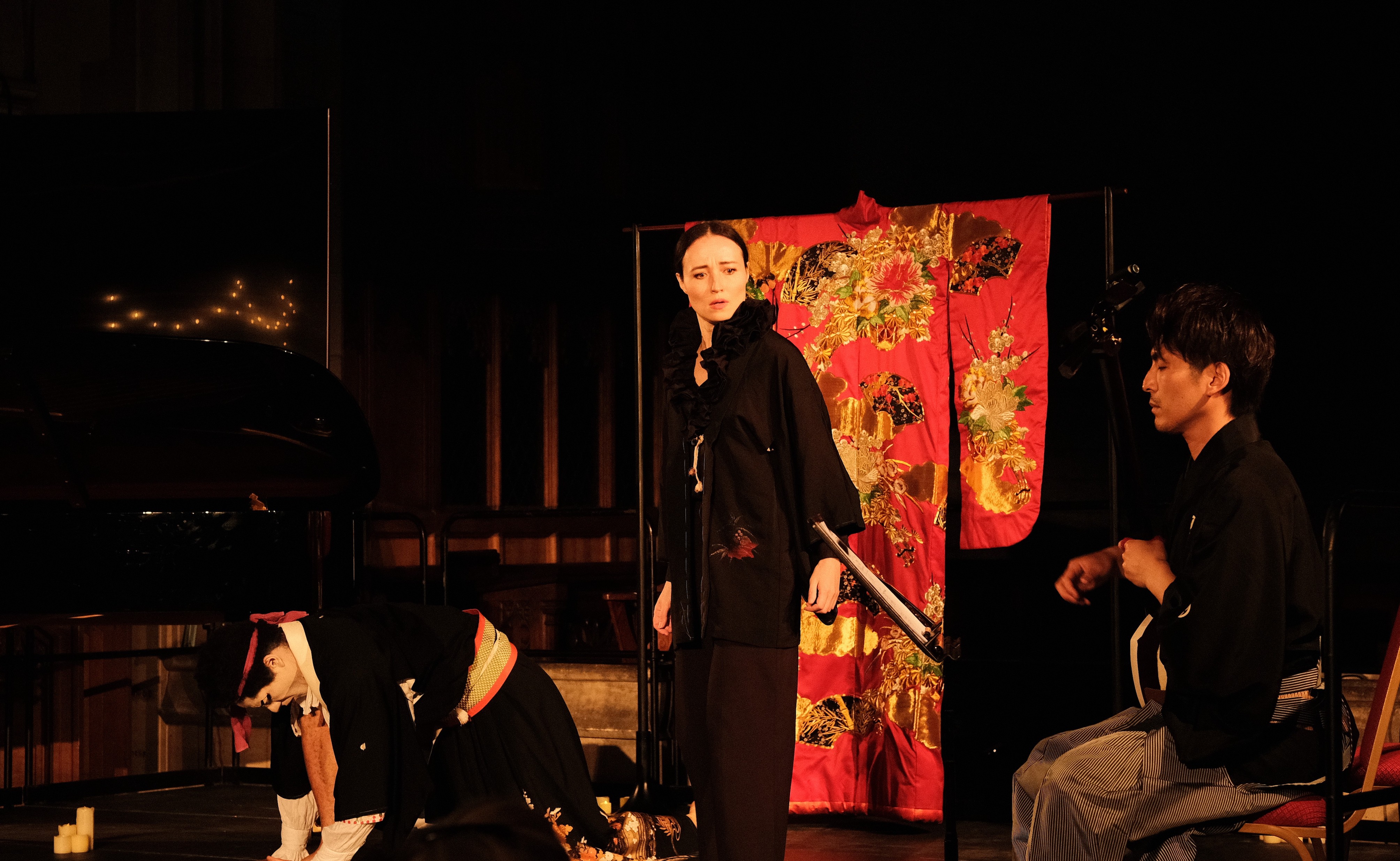
Still, Ryedale’s ready access to glamour and grandeur should never be discounted. At Castle Howard (which, thanks to Granada TV, will forever be Brideshead to my generation), a cleverly constructed Triple Concert saw audiences move around three spaces within Vanburgh’s Baroque extravaganza (Long Gallery, Chapel, Great Hall) as three groups of musicians played a 40-minute programme three times. Festival residents the Van Baerle trio from Amsterdam (pictured below) brought sumptuous refinement to Saint-Saëns’s E minor piano trio. The vigorous warmth and pin-sharp interchange of violin (Maria Milstein), cello (Gideon der Herder) and piano (Hannes Minnaar) found dimensions in this music far beyond its sophisticated salon charm – not least in the haunting 5/8 andante. For me this fervent togetherness and cultivated ardour brought hints of the Beaux Arts Trio: there’s no higher praise.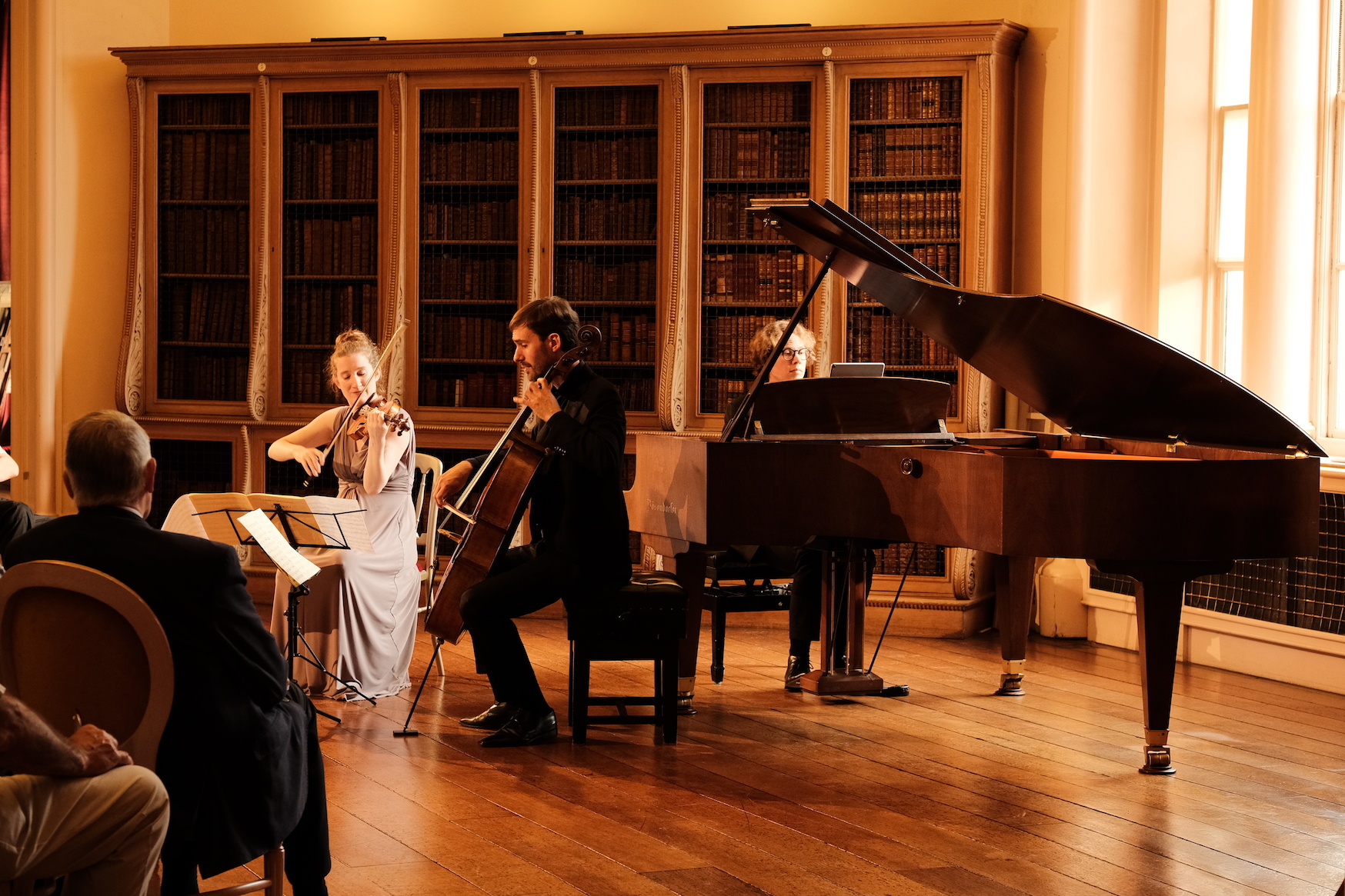
For all their magic, dream settings can signify acoustic nightmares. In the Baroque ravine of Castle Howard’s Great Hall, Irish violinist Aoife Ní Bhriain and Welsh harpist Catrin Finch wrestled (and overcame) a boomy cavernous space in a set based on their Double You album. The pair (pictured below) followed a snatch of a Bach partita with a self-penned suite that wove folk and classical motifs into a beguiling virtuoso tapestry. Not only periods but styles whirled together here into a sort of Philip Glass-meets-bluegrass groove (with venue-appropriate touches of Italianate Baroque). Harp and violin swapped melodic and rhythm-section duties in a swaggering synergy that thrilled especially in the final fusion of two traditional themes, one from Brittany, the other from Prince Edward Island. 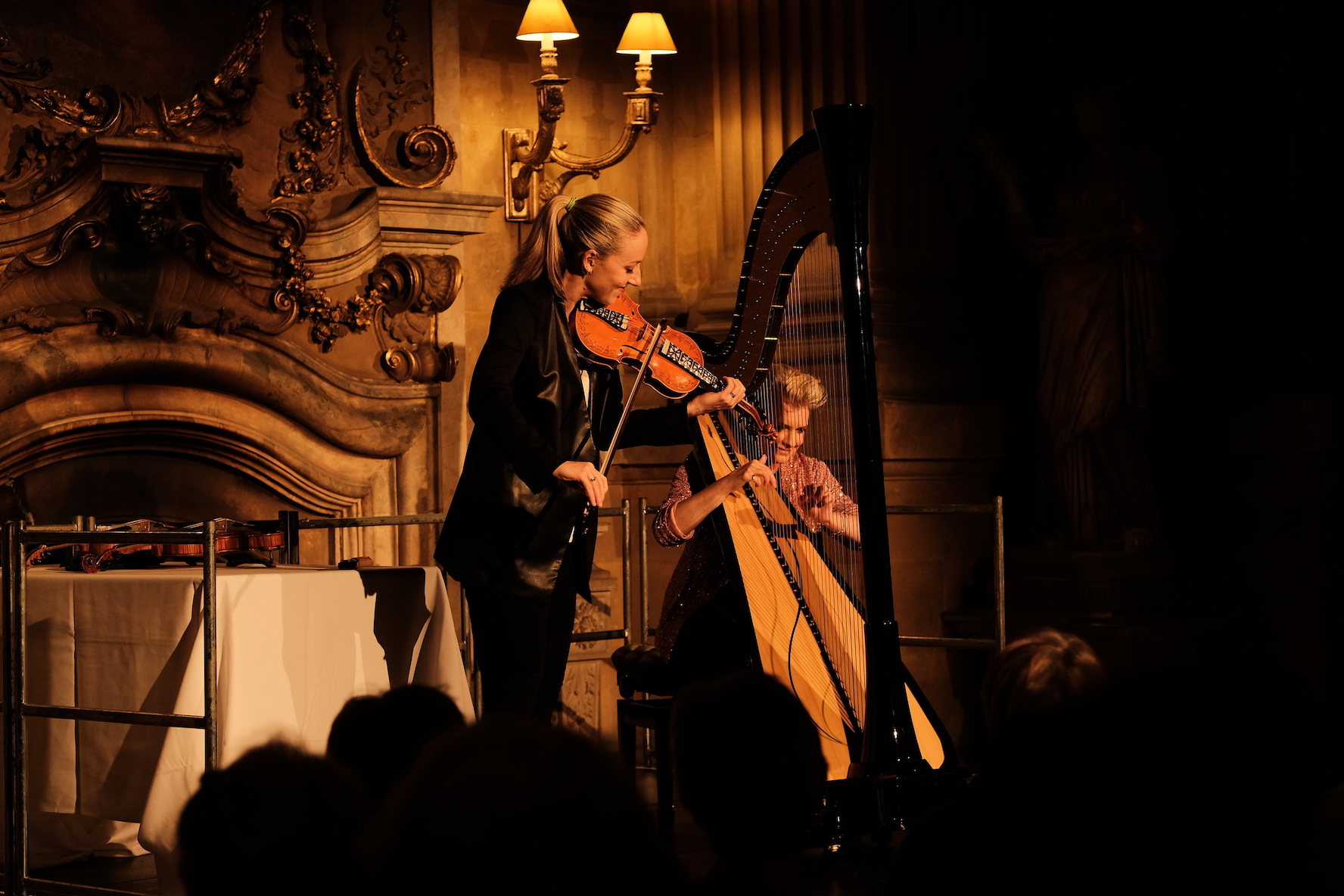
Chatting easily with the audience, even holding up her rare manuscripts for us to see their spidery tracery, Podger (pictured below) then dug deeper into the solo violin repertoire of – just before – Bach’s age. Suites by Matteis, von Westhoff and Vilsmayr drew a wide arc from courtly introspection to vernacular exuberance, with the tavern as close as the salon. Acrobatic in her execution of the showier numbers (with spectacular double-stopping and bariolage), she demonstrated too how much a folksy snap and drive pushes this (at first glance) austere music along. Chad Kelly’s Phantasia paid a bold contemporary homage not just to Bach-era fiddle but the medieval sonorities that lie deeper in its hinterland, while Vilsmayr’s scordatura-tuned Partita in G minor bounced and whooped with dance-driven glee. 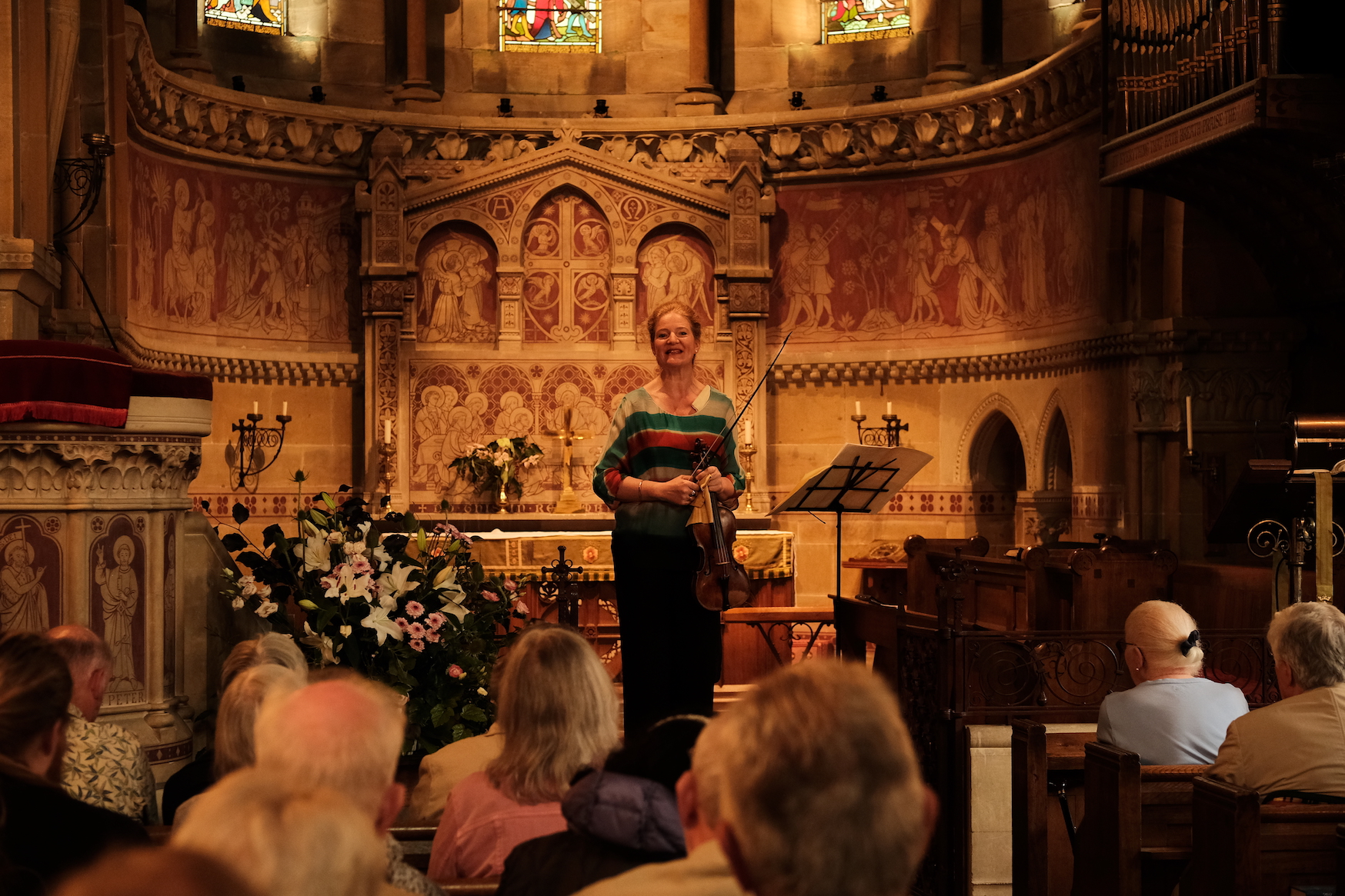
Directed by Rory McCleery, the ten Marian voices took the claims of musical authenticity seriously: for instance, the inevitable Allegri Miserere – with five singers visible at the abbey's crossing, the other four eerily set further back in the choir – came without some of its non-canonical high Cs. The Consort sang works by Allegri, Victoria and Palestrina not just with purity and precision but a grasp of polyphonic drama that made the most of an acoustic that proved clearer and brighter than such cathedral-sized canyons usually supply.
This compact squad made a mighty impact. Antiphonal contrasts and blendings, allied to piercingly exact diction, emphasised the liturgical theatre of emotional light and shade that the Popes demanded – and enjoyed – at home in Rome. From the kaleidoscopic polyphony of the Regina Caeli by Vicente Lusitano (the first Black composer in Europe whose name we know) to the competitive clash of choirs in Palestrina’s setting of the same words, In Sorrow’s Footsteps confirmed that Renaissance masters could make a joyful noise out of solemn, mournful texts. McCleery’s commentary reminded us that behind the celestial voices lay some very flawed flesh-and-blood singers, ruthlessly assessed in a census of the Vatican choir: one singer was deemed “almost bearable”, another merely “useless”. The Marians signed off with a modern work that pays loving homage to the musical past without any deadening mimicry: James MacMillan’s own Miserere, which memorably harks back to Allegri, and sideways to Scottish folk, just as Allegri himself channelled earlier plainchant.
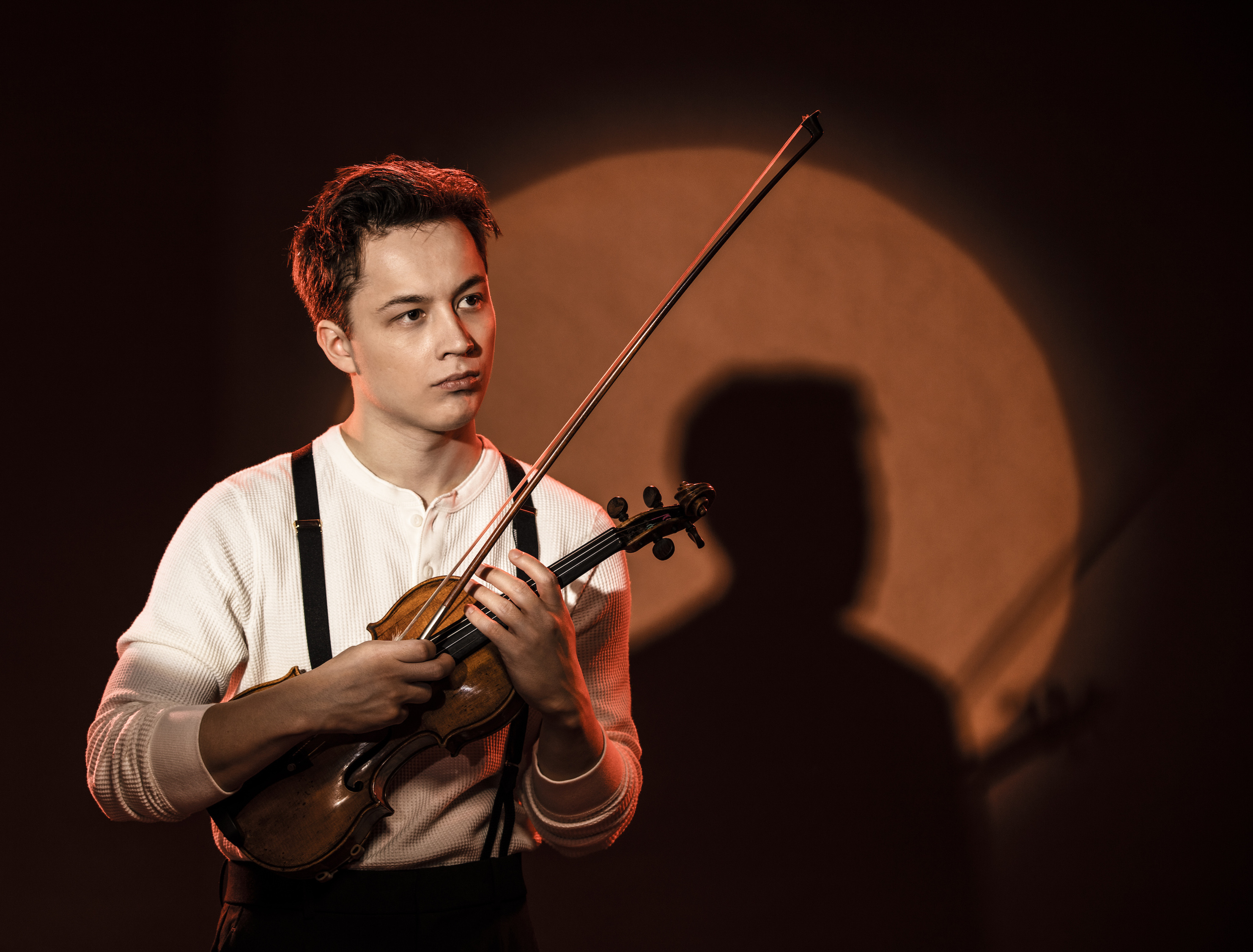 Back in Helmsley, the church of All Saints – another fruitful marriage of Norman and Victorian architectural elements – hosted the much-garlanded young Swedish-Norwegian violinist Johan Dalene and pianist Christian Ihle Hadland. Gramophone’s “young artist of the year” in 2022, Dalene (pictured above by Mats Bäcker) played three intricately demanding sonatas with piano parts that make equally tough asks. The duo, assisted again by a close, involving acoustic, made a formidably virtuosic bill-of-fare sound like a stroll in the hills.
Back in Helmsley, the church of All Saints – another fruitful marriage of Norman and Victorian architectural elements – hosted the much-garlanded young Swedish-Norwegian violinist Johan Dalene and pianist Christian Ihle Hadland. Gramophone’s “young artist of the year” in 2022, Dalene (pictured above by Mats Bäcker) played three intricately demanding sonatas with piano parts that make equally tough asks. The duo, assisted again by a close, involving acoustic, made a formidably virtuosic bill-of-fare sound like a stroll in the hills.
You might even treat Beethoven’s C minor sonata (no. 7) as a piano piece with violin accompaniment; Hadland’s stormy, imperious playing certainly never retired to a back seat. Dalene, however, lends to his tone a weight and bite that – in the Beethoven and later – proved thoroughly charismatic. Even in the cantabile peace of the adagio, the pair found an edge and piquancy that kept straightforward sweetness at bay. And the galloping finale had a punchy urgency that rose into controlled delirium, almost Appassionata-style.
In Debussy’s G minor sonata, Dalene likewise located a vein of impassioned earthiness that banished any sense of pretty “Impressionist” insipidity. They captured this late work’s madcap, capricious side, as the mercurial Debussy jests, broods and flounces in wildly varied moods that swing between portamento mock-sentimentality to the motoric toccata of the animé finale. After that, four richly coloured miniatures by Grazyna Bacewicz gave Dalene another platform to display his versatility of timbre and technique, before César Franck’s A major sonata finished the menu with another hefty signature dish.
As Franck moves from his initial salon charm into layered complexity of melody and harmony, Dalene’s violin voice had a grain and body that gave this music force as well as finesse. Ably supported by Hadland – sometimes robustly, often tenderly – Dalene brings a forthright, candid quality even to writing of silky, quicksilver urbanity. He allowed Franck, at his harmonically subtlest, to sound open, fresh and generous, and made the closing Allegretto theme truly soar and sing.
Cherish your moments, Sheila Hancock had said. How fitting, then, that my Ryedale journey should end with Franck’s sonata. This piece is the most likely model for the fictional “Vinteuil Sonata” whose elusive melodies haunt the vast span of Marcel Proust’s In Search of Lost Time. For Proust, just a “little phrase” from this work (or some close imaginary counterpart) can trigger an avalanche of memories of love and loss, as music reclaims from oblivion “the forgotten refrains of happiness”. Festivals may make memories to nurture, but they also stoke hopes of happiness to come. Next year, Ryedale will surely fulfil them.













Add comment